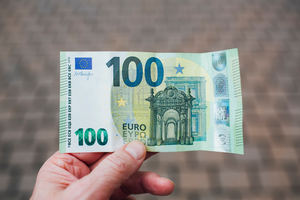How to Cash in Savings Bonds – Tips For Children
What is a Savings Bond? The U.S. Government issues federal savings bonds to its citizens as an effective way of saving their money for retirement. The cash from the federal savings bond market is used to pay down existing federal student loans, for example, and also help finance additional post-secondary schooling.
How to cash in bonds – what are the “potential” returns? Many experts believe that future returns on bonds are quite low, especially if interest rates continue to remain historically high. Potential returns are determined by calculating how much current interest will cost you over the course of your retirements. Potential returns can include discounts on CDs or individual bonds; however, these discounts may be less than expected if current interest rates remain high.
How to cash in savings bonds – how to use interest to save for your children’s future. One of the best tips to use when learning how to cash in bonds is to start saving early. It is important to remember that interest rates are lower when you purchase a CD, which makes certificates of deposit (CDs) a better option, if you want to save for your children’s college education. However, if you want to learn how to save for your children’s college education and financial future, you should consider getting a certificate of deposit (CD) or a savings bond for your child instead.
When learning how to cash in savings bonds, you should understand the relationship between the rate of return and the current value. The current value refers to the amount of money that would exist at the end of the period in which you are investing. The return on the bond depends on the current stock market value. The rate of return on these types of certificates of deposits will also vary depending on the country where they are purchased. For example, treasuryDirect customers can choose from a variety of Eurozone countries including Italy, Ireland, Portugal, Spain, Greece, Portugal, and Austria.
If you are looking for how to cash in savings bonds for your child, consider looking into either a treasury Direct account or a certificate of deposit (CD) for your child. These options have advantages and disadvantages. Treasury Direct accounts provide more flexibility, allowing you to move funds between CDs and savings. However, you cannot make purchases using your CD’s as you can with a treasury Direct account.
You should also consider how to cash in bonds using certificates of deposit. Certificate of deposit certificates do not pay dividends. Instead, they pay interest. You will receive a regular rate of interest on your CD’s plus a little extra each month. There are no minimum requirements or minimum balances of the CD’s you can use to finance your child’s education. The last three months of your Series EE will be deposited directly into your savings account when your Series E consolidated.
If you want to know how to cash in savings bonds for your child, you may be wondering how to redeem paper savings bonds. If you want to know how to cash in bonds for your child, consider looking into Series EE, Series I and Series II. These Series are considered low risk investments and do not require a minimum balance. They also come with the option of having your money earn interests that can be withdrawn tax-free when you reach a certain age.
How to cash in bonds for your child requires careful consideration. Remember, as your child matures, your bond investments will likely earn interest only. If you have a series of high interest bonds that you want to redeem, consider a paper bond purchase. If you choose this option, remember to keep your cash investments in certificates of deposit and do not let the paper bonds out of your sight.


